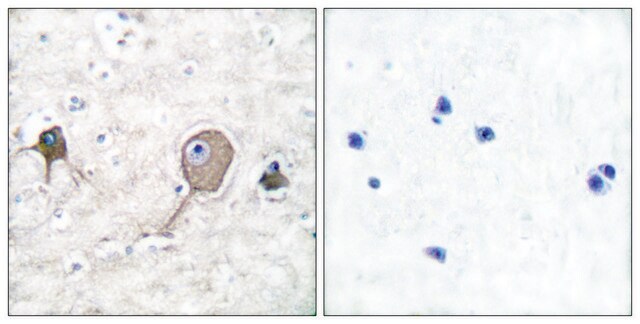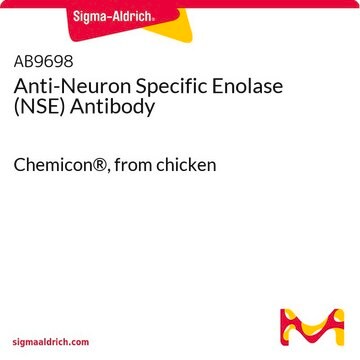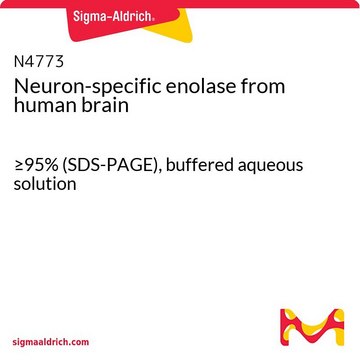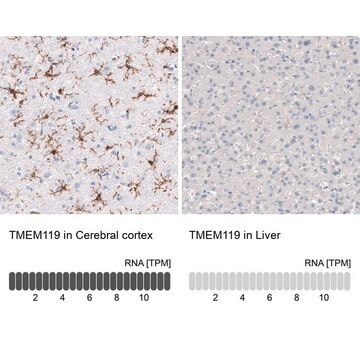SAB4200571
Anti-Neuron-Specific Enolase (NSE), Mouse monoclonal
clone NSE-P1, purified from hybridoma cell culture
Synonim(y):
Anti-2-phospho-D-glycerate hydrolyase, Anti-Enolase 2 (gamma, neuronal), Anti-NSE, Anti-Neural enolase, Anti-gamma-enolase, Monoclonal Anti-2-phospho-D-glycerate hydro-lyase
About This Item
Polecane produkty
pochodzenie biologiczne
mouse
białko sprzężone
unconjugated
forma przeciwciała
purified from hybridoma cell culture
rodzaj przeciwciała
primary antibodies
klon
NSE-P1, monoclonal
Formularz
buffered aqueous solution
masa cząsteczkowa
antigen ~47 kDa
reaktywność gatunkowa
human, rat, mouse
stężenie
~1.0 mg/mL
metody
immunohistochemistry: 10-20 μg/mL using formalin-fixed paraffin embedded human cerebellum.
western blot: 0.5-1.0 μg/mL using NTERA-2 (NT2/D1) total cell extracts.
izotyp
IgG1
numer dostępu UniProt
Warunki transportu
dry ice
temp. przechowywania
−20°C
docelowa modyfikacja potranslacyjna
unmodified
informacje o genach
human ... ENO2(2026)
Opis ogólny
Specyficzność
Immunogen
Zastosowanie
- barwieniu immunofluorescencyjnym
- immunocytochemia
- mikroskopia immunofluorescencyjna
- immunoblottingu
- test immunoenzymatyczny (ELISA)
- immunohistochemia
Immunocytochemia (1 artykuł)
Działania biochem./fizjol.
Postać fizyczna
Przechowywanie i stabilność
Oświadczenie o zrzeczeniu się odpowiedzialności
Nie możesz znaleźć właściwego produktu?
Wypróbuj nasz Narzędzie selektora produktów.
Kod klasy składowania
10 - Combustible liquids
Temperatura zapłonu (°F)
Not applicable
Temperatura zapłonu (°C)
Not applicable
Wybierz jedną z najnowszych wersji:
Certyfikaty analizy (CoA)
Nie widzisz odpowiedniej wersji?
Jeśli potrzebujesz konkretnej wersji, możesz wyszukać konkretny certyfikat według numeru partii lub serii.
Masz już ten produkt?
Dokumenty związane z niedawno zakupionymi produktami zostały zamieszczone w Bibliotece dokumentów.
Nasz zespół naukowców ma doświadczenie we wszystkich obszarach badań, w tym w naukach przyrodniczych, materiałoznawstwie, syntezie chemicznej, chromatografii, analityce i wielu innych dziedzinach.
Skontaktuj się z zespołem ds. pomocy technicznej








